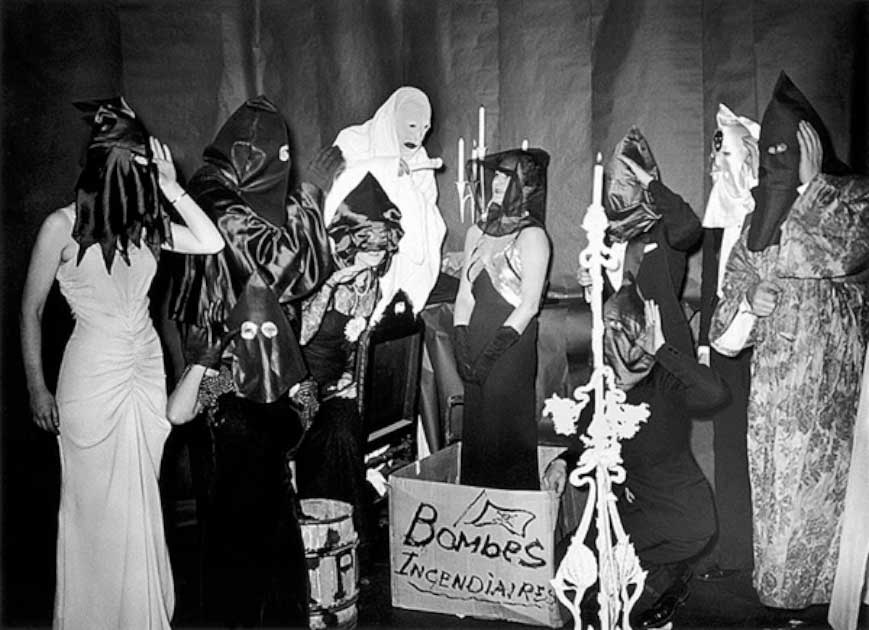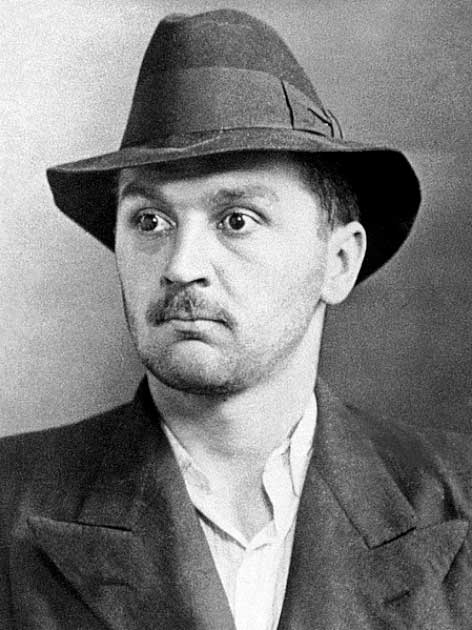Less than one minute. That was all it took for one woman, Laetitia Toureaux, to be murdered on the Paris Metro in 1937. Traveling alone in the first-class car of the train, she was alive when the metro left the first stop and dead by the time they arrived at the second stop.
This murder remains unsolved to this very day, and beyond that seems almost impossible. How could the murderer have entered the train, killed Laetitia, and left without being seen by a single person, all while the train was moving and all in under a minute?
The murderer may have committed the perfect crime. But as to why Laetitia was the target of this murder, the story of her death uncovers the dangerous and politically volatile society of post-war Paris.
Who Was Laetitia Toureaux?
Laetitia Nourrissant Toureaux was a beautiful 29-year-old Italian immigrant who had lived in Paris, France since the 1920s, where she had moved with her mother and siblings after her parents had split up. She was known to be kind and smart, often giving food to homeless children on the streets.
Although she was a young woman, Laetitia was also a widow and had only been married for a very short time. She was heartbroken when her husband died, but a secret came to light on his death.
Her husband, Jules Toureaux, never told his family he was married to Laetitia until the day he died. The two had married in secret in 1929 but Jules continued to live with his parents, and would visit his wife at an apartment he rented for her.
Social class was of huge importance in Paris at the time, and Jules was from a higher stratum of society than his working-class wife. His parents and society in general would not approve of his choice of a bride, so they never told them. When Jules’s parents finally learned of Laetitia, their son’s wife for the last 6 years, they cut all legal ties and gave her nothing from Jules’s will.
To make ends meet, Laetitia Toureaux spent her days working in a wax factory, and in the evenings, she would work as a cloakroom attendant in a dance club on the seedier side of Paris. She was liked by everyone and men in the club would buy dance tokens to dance with Laetitia. She was happy to oblige.
Her popularity with men only increased as time went on, and she was known to have multiple lovers only a year after her husband died. This, combined with her work in a dance club led many to believe she was also a prostitute. However there has never been any proof that Laetitia was a prostitute.
Her Double Life
It was only after her murder that the police, the press and the public learned more about who Laetitia Toureaux was. It came to light that Laetitia was working for a private investigator and had been doing so for over a year. Even more surprising was the fact that she was unofficially working for the Paris police.

She would look in the pockets when she was a coat room attendant, relaying information she found to authorities. Cloakrooms were known to be a place to drop letters that could not be intercepted. But her work for the authorities also had more personally dangerous elements: Laetitia had also infiltrated a notoriously dangerous extreme organization through a relationship with the group’s gun smuggler and runner, Gabriel Jeantet.
The group Laetitia Toureaux infiltrated in 1936 was known as the Comité Secret d’Action Révolutionnaire (CSAR). They were dubbed “la Cagoule” (the cowl, hooded) because members would wear hoods to protect their identity from other members, in a similar fashion to the American white nationalist group the Klu Klux Klan (KKK).
The Cagoule was a pro-fascist, anti-communist, anti–semitic terrorist group. Post-war France was a unitary parliamentary republic, governed by a socialist party and the Cagoule was trying to dismantle the system.
The goal of the Cagoule was to overthrow the government and reinstate a monarchy, to eventually lead to a fascist dictator. They were inspired by Benito Mussolini’s fascist Italian state. The organization had powerful members, including retired navy and army officers, heads of businesses, doctors, and engineers. Many members also came from distinguished establishment families.
The Cagoule was also tacitly funded by the heads of major companies like Lesiur Oil, Michelin, and L’Oréal. The Cagoule was tied to several murders, bombings, and espionage and was unafraid to resort to deadly measures when needed.
The Failed Test and An Impossible Murder
Members of the Cagoule began to suspect Latetia Torueaux was a mole, and set up a test to see if she was an informant. She was told there would be an arms run, and after her tip-off to the authorities an officer went to check the car at the Swedish border. However it was empty: Laetitia failed the Cagoule’s test, and she was most likely murdered for it.

The night she was murdered, Laetitia Toureaux was taking the Paris Metro home from a day out. Laetitia treated herself to a first-class ticket and boarded the empty Metro car at the Porte de Charenton station.
By the time the train made it to the next stop at Porte Dorée, Laetitia Toureaux was barely alive. The time it took to get to the Porte Dorée station was 45 seconds. She was the only passenger in the first-class car and the tram driver said he saw her and verified that she was the only one in there.
Laetitia was found on the floor with a 9-inch knife deeply buried in her neck, by a family entering the first-class car at Porte Dorée. She died on the way to the hospital before anyone could find out what happened in those 45 seconds.
Others on the Metro that night were questioned and they all said the same thing: nobody saw anyone open the port door into first-class during the 45-second trip. Nobody ran off panicked or bloody from any of the tram’s arrival at Porte Dorée. There was zero evidence or fingerprints in the car and the knife was a common knife, not one that could be traced back to an owner. It was as if a ghost had killed Laetitia.
A Possible Solution?
In the first few days following Laetitia Toureaux’s Metro murder the press wrote about her life, as a coat attendant and factory worker. But by the end of the week, everyone knew of Laetitia’s double life and association with the Cagoule. Only a hitman could pull off something like that and stab her perfectly in the jugular without being seen.
Laetitia Toureaux was likely killed by Cagoule’s principal assassin, Jean Filiol. Not long after the murder on the Metro, he fled to Spain before World War II began in 1939. He spent the rest of his life as a wealthy man near San Sebastian.
The police figured Laetitia was killed because of her espionage and association with the Cagoule. But the Cagoule’s leaders were powerful men and there was zero evidence connecting Laetitia Toureaux’s death to the group so no charges were pressed. Eventually, her case went cold and was forgotten about, remaining officially unsolved to this day.
But known who killed her and knowing how are two very separate things. It would be surely impossible for Filiol to get into the car unseen, stab Laetitia Toureaux in the neck, then escape in only 45 seconds. A more plausible explanation for the stabbing is that she wasn’t stabbed in the first-class car at all.

The Metro station was very crowded because it was Pentecost Sunday and families were returning from a day in the park celebrating. The platform was crowded and passengers moving out of and into the cars could be congested. Filiol may have come up behind Laetitia, stabbed her, and then lost himself in the crowd, never boarding the train at all.
The knife had penetrated her jugular vein but it was left inside the wound. A cut to the jugular is survivable but the removal of the knife from a stab wound is what causes the uncontrolled bleeding. Laetitia may have been stabbed before she boarded the first-class car and she and those around her never noticed what happened.
Could this have been the case with the murder of Laetitia Toureaux?
Top Image: Killed in an empty Metro carriage in less than a minute: how did the murder of Latitia Toureaux occur? Source: Alf van Been / Public Domain.
By Lauren Dillon